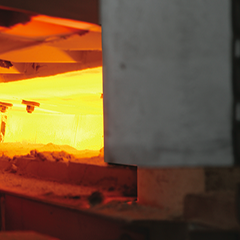Glass innovations come into focus at a testing time
for the industry. PES investigates…
Although the costs for solar power have come down considerably lately, photovoltaics are still unable to compete with conventional energy sources. The
“last mile” to competitiveness will therefore prove difficult for the sector: cell and module production have already been rationalised substantially. Companies now need to increasingly focus on innovations in raw materials and components.
Analysts agree: after two years of consolidation the global PV market is picking up again. US-based market research company NPD Solarbuzz expects global demand for PV to reach between 45 and 55 Gigawatt this year after 37 Gigawatt in 2013. Experts expect strong growth especially in Asia as well as in North and South America. This means that alongside the established markets in Europe new regions will soon emerge on the PV landscape.
Markets are driven by solar power feed-in-tariffs designed in line with Germany’s Renewable Energies Act. To the tune of 60 countries have introduced this type of subsidy now and, at the same time, PV systems are becoming more affordable by the day.
According to the trade portal pvXchange, prices for an average turn-key system with crystalline modules from Germany dropped by some 25% to around EUR 1,500 per Kilowatt.
This price dumping can be attributed to the keen competition prevailing in the PV industry. In China, in particular, solar energy component factories have been virtually springing up like mushrooms over the past few years thanks to state subsidies. “In China this is encouraged by the state: Chinese manufacturers wish to dominate this promising future market at any cost,” explains business consultant and China expert Frank Haugwitz. The over-supply of solar modules is forcing producers to offer drastic discounts.




















